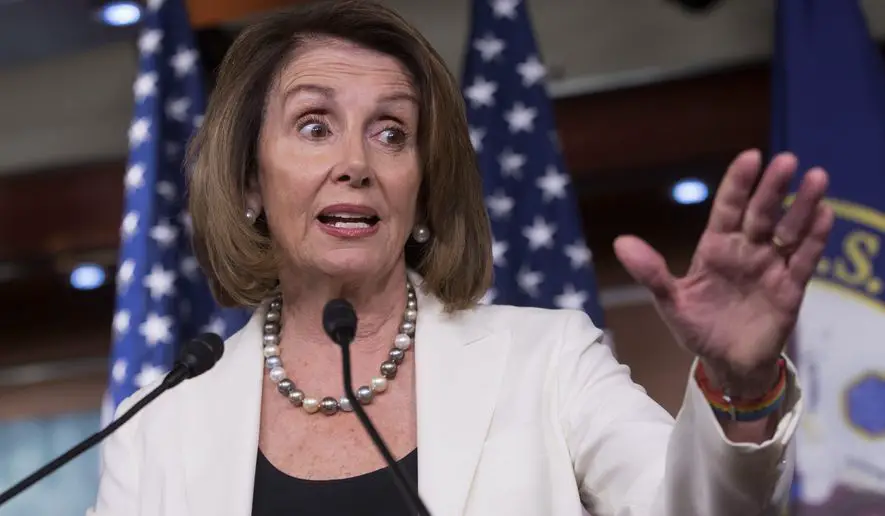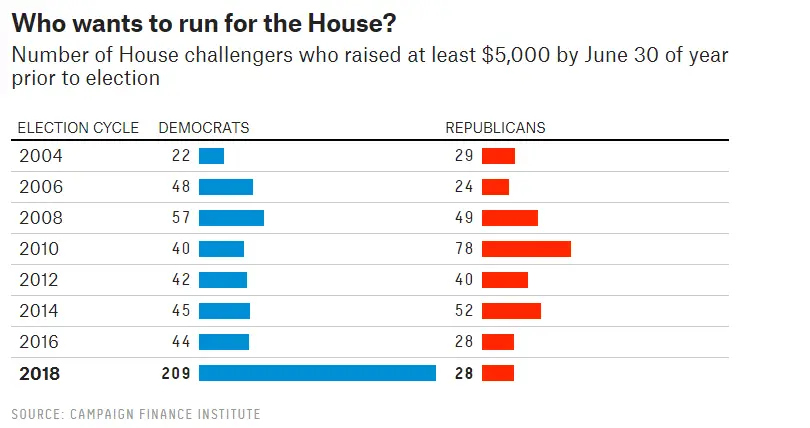They say there is strength in numbers, and that translates to many aspects of life. One in particular, where we’re concerned, is the number of candidates a party can recruit to challenge the party in power. When Republicans recaptured the House of Representatives in 2010, credit was given to the 50-state strategy of getting as many Republican challengers on the ballot in as many precincts as possible. Not all of them would win, of course, but it created a situation where the odds provided more chances to pickup a seat, and sometimes voters just needed another option other than the status quo. In 2018, Democrats are hoping to replicate this strategy across the country.
As FiveThirtyEight reports, the Democratic Congressional Campaign Committee (DCCC) has already recruited a record number of challengers:
The main finding was that Democrats hold an enormous advantage in early candidate filings for the 2018 midterm elections. In particular, if we limit the analysis to the number of challengers to House incumbents who have filed for next year and have raised at least $5,000 — in an effort to narrow our sample to truly viable candidates — we see a record advantage for Democrats right now.
But what exactly does this mean? Yes, Democrats had twice the number of challengers that Republicans did in 2006 and then took over the House in that election, while a similar advantage yielded similar payoffs for Republicans in 2010.
The story goes on to explain that a greater number of candidates does not necessarily equate to a greater number of victories, but historically speaking, it usually pays off in some capacity. The real benefit to having such a large number of eager challengers is that it creates a large pool of quality candidates from which the best of the best can be put on the ballot:
It’s not precisely that the number of candidates causes a party to win more seats. After all, there are only so many House seats in play. What a large number of challengers does create is a better recruitment environment. If there are several challengers from whom to choose in a particular race, a party can pick the strongest nominee.
Obviously the number of Republican challengers will be lower right now since they currently hold the majority in the House. However, there clearly is a “Trump effect” when it comes to motivating Democrats en masse. The political world works like the clock on your wall. It turns and hits every hour over a 24 hour period, then it repeats. In the past 10 years, with Tuesday night being no exception, the political environment has functioned almost like clockwork. One side wins, the other side gets motivated, then the rolls reverse, etc… Each side simply capturing the disgust every couple of years and turning out a motivated group of voters.
If Republicans fail to pass anything meaningful, such as tax reform and/or a health care repeal, they will be stuck defending an empty record and risk destroying their chances of turning out the GOP base in 2018. Democrats are getting ready to have their 2010 moment, Republicans had best be prepared.
Donate Now to Support Election Central
- Help defend independent journalism
- Directly support this website and our efforts

